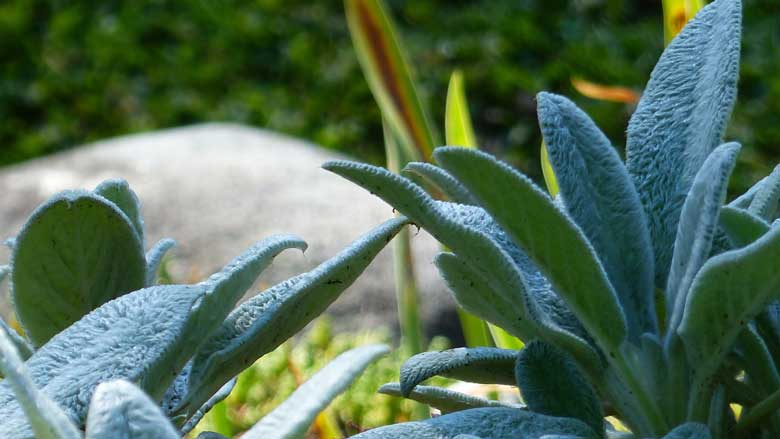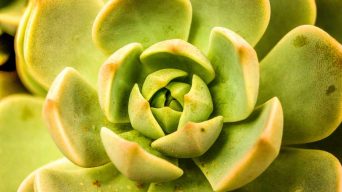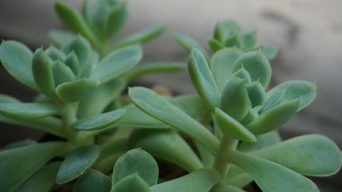If you’ve been growing succulents for a while, you may have noticed that they occasionally start to shrivel up.
It can be alarming to see your plants looking so unhealthy, but don’t worry – there are usually reasons why this happens and solutions to fixing the problem.
Here we’ll discuss some common causes of succulent shriveling and how to remedy them.
Why Does My Succulent Looks Shriveled?
So, why is my succulent shriveling?
The most common reasons why succulents look shivered are overwatering and underwatering.
Succulents are very sensitive to the amount of water they receive, so it is essential to be aware of how much you are watering them.
Succulents store water in their leaves and roots so they can go for long periods without water.
However, if the succulent plant is constantly wet, it will not be able to store water and will eventually shrivel up.
Underwatering a succulent can also cause it to look shriveled. Succulents need at least some water to stay alive.
If they do not receive enough water, their leaves will start to droop and eventually shrivel.
There are other reasons why succulents might look shriveled.
One reason could be that the plant is too hot or cold.
If the succulent is in a location where it is too hot or cold, it may start to wilt.
Another reason could be that the succulent is not getting enough sunlight.
Succulents need at least four hours of direct sunlight daily to stay healthy. If they do not get enough light, they will stretch and eventually shrivel.
Overwatered Succulent
If your succulent looks wilted or shriveled, you may be overwatering it.
Succulents need very little water, so if you water it too often, you could be causing the plant to die.
Succulents need water, but they do not need to be constantly wet. If you water your succulent every day, you are probably overwatering it.
Succulents should only be watered once a week or every other week.
If your succulent is constantly wet, the water will not be able to evaporate, and the plant will start to drown. The leaves will turn brown, and develop root rot or mold.
How to Save a Succulent Due to Overwatering
If you suspect you may be giving your succulent too much water, it’s crucial to refrain from watering it for a few days.
This will give the plant time to dry out and help prevent the roots from rotting.
If the roots have already started to rot, you will need to cut them off. You can also trim the dead leaves and stems from the plant.
Once the succulent has dried out, you can start watering it again. Only water it once a week or every other week.
You can know if the plant needs water by checking the soil. The soil should be dry before you water it again.
Ensure to water it well and allow the water to drain out of the pot. Ensure the pot has a drainage hole so the water can escape and the roots will not rot.
Remember to use well-draining soil so the water can escape and the roots will not rot. You can also add some gravel to the bottom of the pot to help with drainage.
Underwatered Succulent
If your succulent looks wilted or shriveled, you may be underwatering it.
Although succulents thrive in dry conditions, they also need some water to stay alive.
If you are not watering your succulent enough, it will start to droop and eventually shrivel.
Succulents should be watered at least once a week.
You can know if a succulent is underwatered if the leaves feel light and papery rather than heavy and full of water.
Also, underwatered succulents will have dry, cracked soil and will not be able to hold together when you try to pick them up.
How to Save an Underwatered Succulent
If your succulent is shriveled due to underwatering, water it well and allow the water to drain out of the pot.
Make sure to give the succulent plenty of water so it can absorb as much as possible.
Make sure to water your succulent once a week from now on. Remember to only water when the soil is dry, and never water over the leaves.
If you have been following the watering instructions, but your succulent is still shriveling, it is possible that the potting soil you are using does not have enough moisture retention.
In this case, you can add some pebbles or rocks to the bottom of the pot before adding the soil. This will help keep the soil moist for a longer period.
If you have tried both of these solutions and your succulent is still shriveling, it might be time to repot the plant into a new container with fresh soil.
Make sure to use a soil that retains moisture well and a pot with a drainage hole.
Too Hot or Cold Temperatures
If your succulent is shriveled, it might be due to the temperature of its environment. Succulents do not like extreme temperatures and can start to die if they are too hot or cold.
Succulents prefer temperatures between 50-85 degrees Fahrenheit. If your home’s temperature is outside of this range, your succulent might be struggling.
When succulents are exposed to too hot temperatures, their leaves will turn crispy and develop brown spots.
If the temperature is too cold, the succulent leaves will turn pale, and the succulents might stop growing.
How to Save a Shriveled Succulent Due to Heat or Cold
If the temperature in your home is too hot or cold for succulents, you can move the pot to a new location with a more moderate temperature.
Succulents do not like to be moved around often, so try to find a spot where they can stay permanently.
The best location for succulents is in a bright, sunny spot where the temperature stays consistent.
If your succulent is shriveled due to the cold, try moving it to a warmer location near a window.
And if your succulent is shriveled due to the heat, move it to a cooler location away from direct sunlight.
Succulents need light to grow, so make sure to place them in a spot where they will get at least six hours of direct sunlight each day.
However, avoid placing succulents in direct sunlight during the hottest part of the day, as this can cause them to overheat.
If the temperature in your home is too extreme for succulents and you cannot find a suitable spot, you might want to consider purchasing a succulent terrarium.
This will create a controlled environment for your succulents, and they will be able to thrive.
When grown outdoors, succulents can be affected by the weather. If it is too hot or cold, they can start to shrivel up.
In most cases, this is not a cause for concern, and your succulent will recover once the weather returns to normal.
However, when temperatures drop below freezing, succulents can die.
If you live in an area where the temperature drops below freezing often, bringing your succulents indoors for the winter is the most advisable course of action.
Also, when temperatures are too high, succulents can start to wilt. If you live in an area with high temperatures, it is best to move your succulents indoors during the summer.
Not Enough Sunlight
If your succulent is shriveled, it might not be getting enough sunlight. Succulents need sunlight to grow, so they will start to droop and die if they do not get enough light.
Succulents need between four and six hours of direct sunlight each day. However, they should not have direct sunlight during the hottest part of the day.
The best type of light for succulents is bright, indirect sunlight. This means the succulent should be in a spot where it can get light, but not in direct sunlight.
You can tell when a succulent is not getting enough sunlight because the shriveled leaves will start to turn pale, and the succulent might stop growing.
How to Save a Shriveled Succulent due to Lack of Sunlight
If your succulent is not getting enough sunlight, you can try moving it to a spot where it will get more light.
The best place for succulents is in a bright, sunny spot where the temperature stays consistent.
When growing succulents indoors, an east or west-facing window is the best spot for them.
This will give them direct sunlight during the morning or afternoon but not during the hottest part of the day.
If you cannot move your succulent to a spot with more sunlight, use a grow light. This will give your succulent the light it needs to stay healthy.
When grown outdoors, find a location where your succulent will get some direct sunlight but also some shade.
This will help keep the succulent from getting too hot and wilting.
Final Thoughts
Succulent plants are an excellent addition to any home or office.
With their low-maintenance requirements and attractive appearance, succulents have become one of the most popular types of plants around.
However, succulents can sometimes be afflicted by problems like leaf shriveling. If you find your succulent leaves shriveling, don’t panic!
There are several possible causes and solutions.
There are many reasons why your succulent might be shriveling.
It’s important to correctly identify the cause of the problem to provide the appropriate solution.
With some care and maintenance, your succulent should start looking healthy and lush again in no time!







